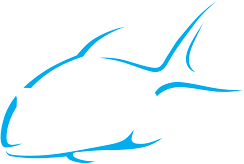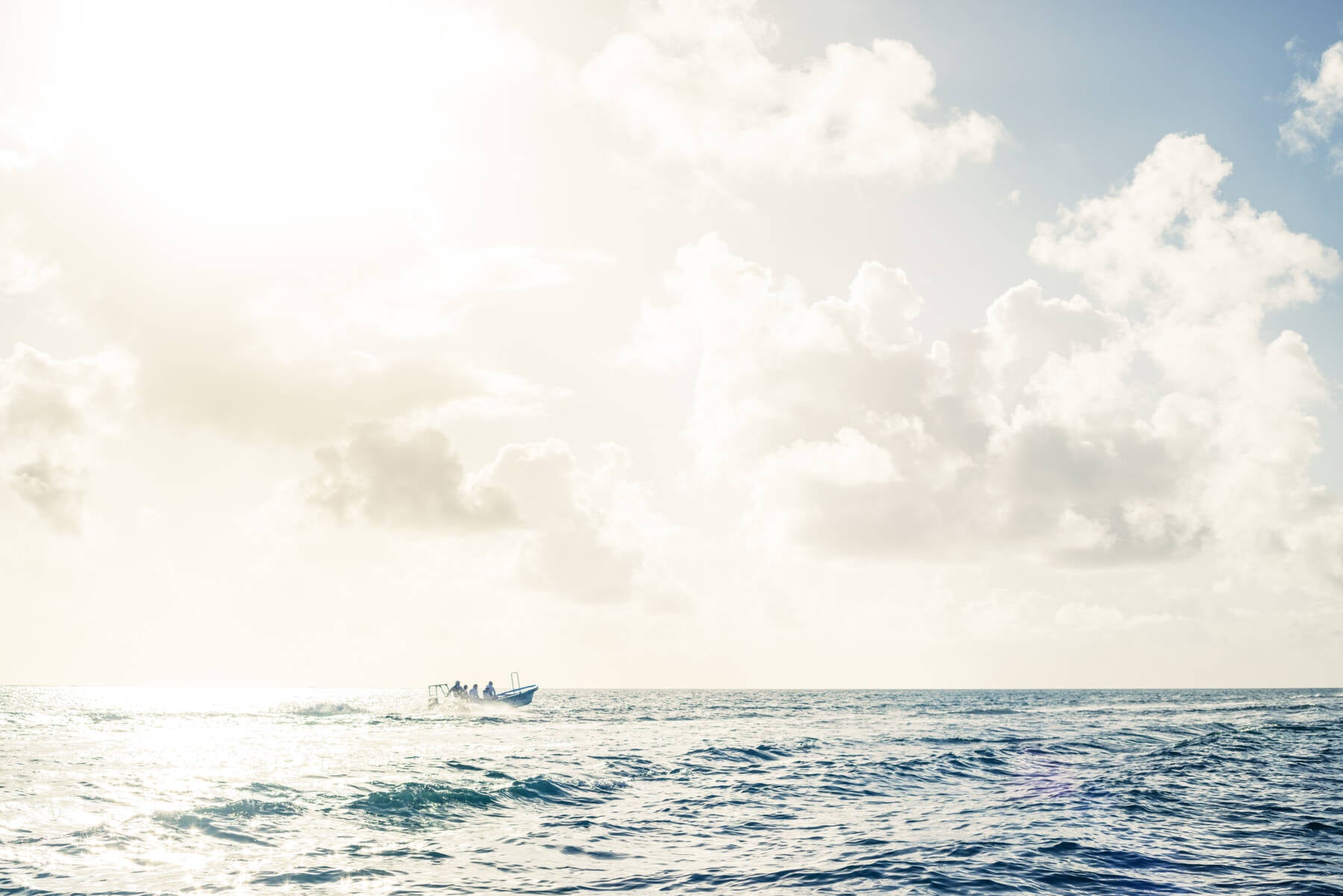
Flies, Tackle, & Gear
Upon Booking a trip to the Palometa Club, we will provide you with a very detailed pre-trip planner and outfitting guide which goes into incredible descriptions and analysis about the proper equipment, tackle and clothing to come prepared with. Also note that we maintain a healthy quiver of loaner Sage Maverick and R8 fly rod outfits (8 – 10 weights) as well as spinning rods for all species. While flies and lures can be purchased at the Club, it is always more reliable to bring a reasonable selection of your own flies and terminal tackle (leaders & tippet). The folks at Tailwaters Fly Fishing Company in Dallas, Texas carry everything we recommend for the Club, including discounted fly selections organized by species.
Notes on Rod and Reel Selection
Ascension Bay is a very diverse fishery with excellent opportunities for bonefish as well as permit, snook and juvenile tarpon year round. Anglers want a 7-8 weight rod with a floating line for bonefish and a 9-10 weight with floating line for permit and tarpon. In a perfect world, for convenience, the ideal quiver of three rods is an 7-8 weight (bones), 9 weight (permit) and a ten weight (tarpon and snook). This allows the angler to have a dedicated rod for each species without having to re-rig repeatedly.
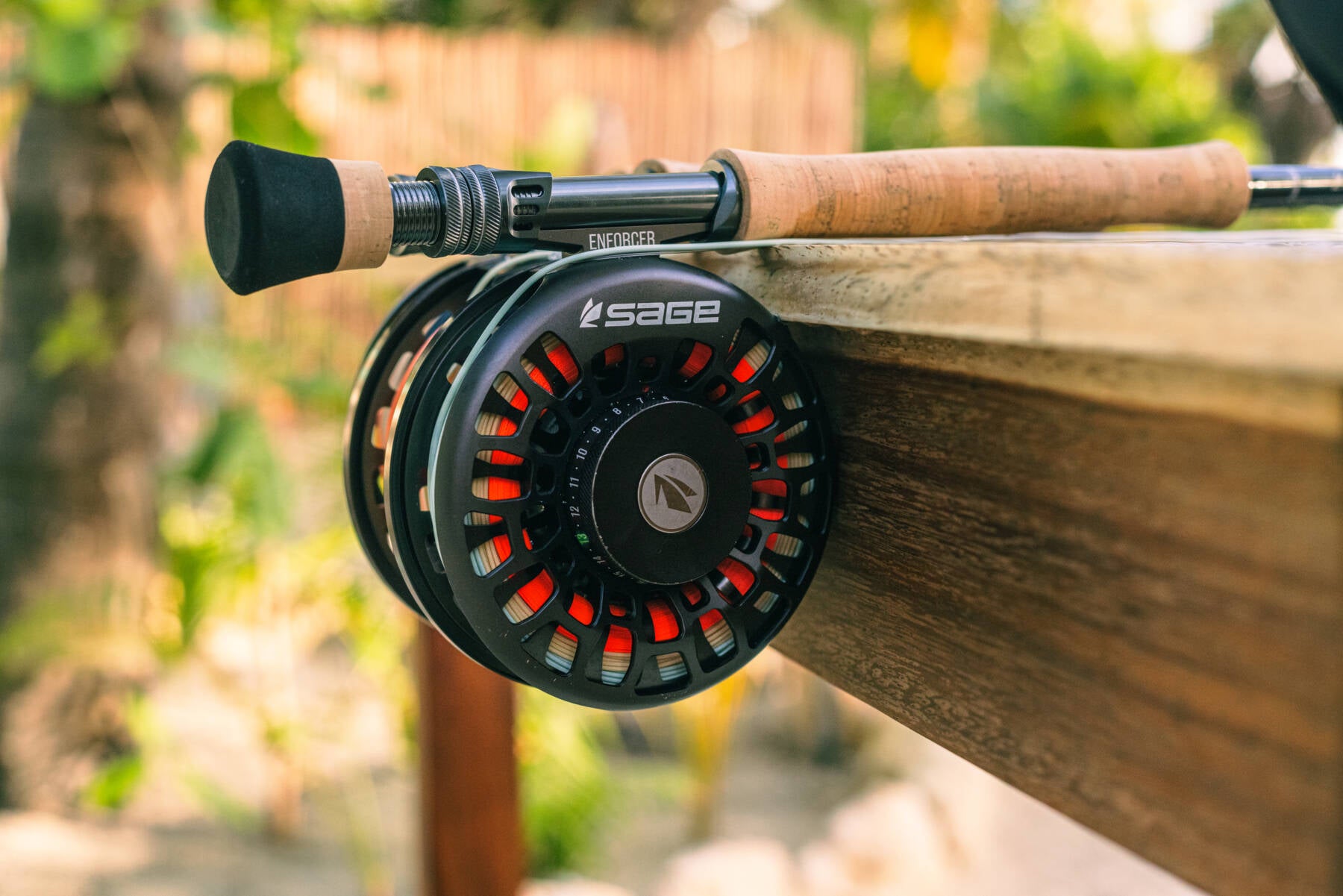
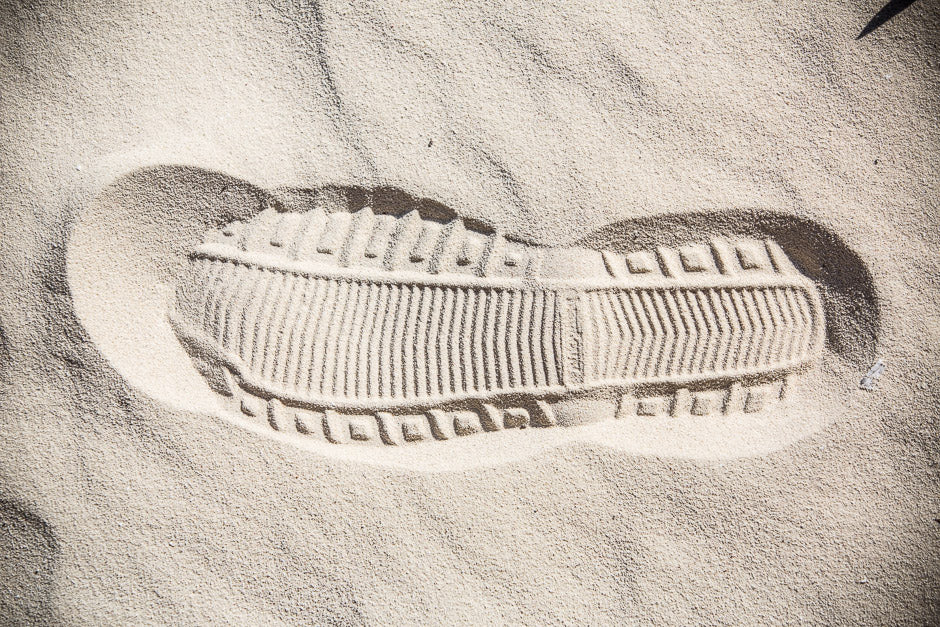
Notes on Footwear
Almost all fishing for bones and permit is done wading, so bring high quality wading boots and a good hip/chest pack. If you are planning on fishing for permit exclusively, you can get away with some simple closed toed sandals (Keen, Simms, Teva). Permit wading areas typically don’t require full wading boots. Bonefish wading areas do require proper wading boots.
Rental Equipment from the club
The Palometa Club can provide rods and reels for guests for $25/day, however we need advanced notice in order to guarantee equipment can be provided. Rental rod / reel outfits are first come first serve ($150 charge if you break something). All anglers must be prepared with a basic selection of flies and terminal tackle as well as appropriate clothing, polarized glasses and appropriate footwear.
Mandatory Equipment
- 7-8 weight rod with floating warmwater fly line (bonefish)
- 9-10 weight rod with floating line (permit & tarpon)
- Polarized Sunglasses Quality Wading Boots
- Fly Selection
- Hip / Chest Pack
Optional Equipment
- Closed Toed Sandals (Permit Fishing Only)
- Appropriate Tarpon & Barracuda Flies
- Wire Leader Material (Barracuda & Sharks)
- Long Pants for Sea-Lice Protection
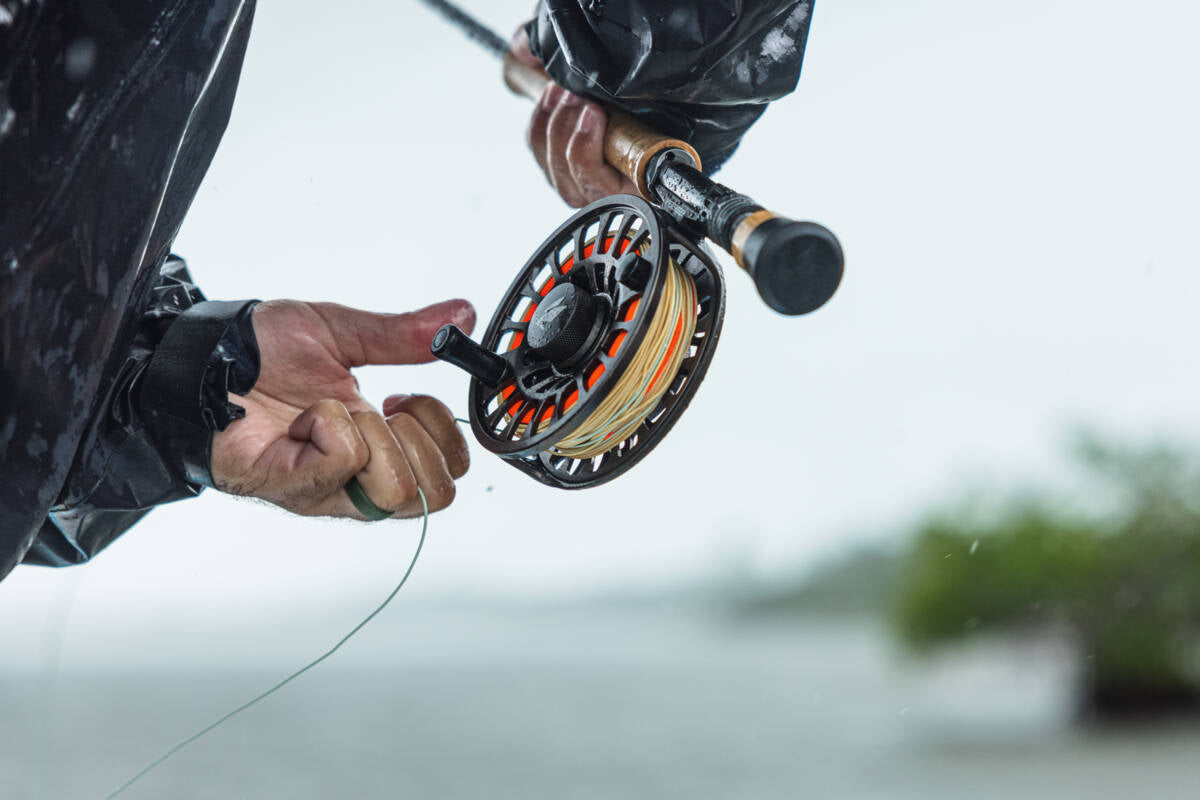
Flies & Terminal Tackle
We will provide you detailed fly selection recommendations in our pre-trip planner & outfitting guides upon booking a trip to the Club. The following is a basic overview of the flies and rigging techniques our guides normally use. The lodge also has a broad assortment of the latest and greatest patterns available for purchase on site.
Permit
A large staple food for all Permit on the Yucatan are small crabs and spawning or mantis shrimp. Depending upon where you are fishing you will want to have different sizes and weights of crab and shrimp patterns (lead eye’s and bead chain eyes) for different depths. Having a decent selection of flies will ensure you are able to match the appropriate pattern for differing bottom structure, water depth, and fish behavior. The most important flies to have in your permit selection are the commercially tied “Raghead Crab” and the “Casa Blanca Raghead” — most often in a size #4. The Club has these patterns and other variations available for purchase at the Club. Spawning and mantis shrimp patterns are also very important to have. Enrico Puglisi makes the best Spawning Shrimp patterns with several different styles, colors, sizes, and eyes (bead chain and lead). Our guides normally prefer 10-12′ leaders in fifteen pound test. Sometimes conditions and fish behavior will dictate downsizing to 12 pound or even bumping up to 17 pound. Fluorocarbon is definitely recommended over monofilament – especially for the tippet sections of your leader.
Bonefish
As a rule of thumb, Yucatan bonefish prefer smaller (size #6 – #8) sized flies, however it is a good idea to have a few #4 flies in your box. There is no need to have several dozen different patterns, rather a decent quantity of the 8-10 top producers. Having a decent selection of flies will ensure you are able to match the appropriate pattern for differing bottom structure and water depth.
The flats of Ascension Bay are a mixture of hard and soft bottom. Some flats are covered in turtle grass or coral rubble, while many are simply white sandy or mud. Make sure that you have flies tied with both bead chain and lead eyes to fish the varying depths more effectively. Some completely un-weighted flies should be in your box as well. For a week of fishing, the typical Palometa Club fly box should contain about 2-3 dozen bonefish flies. The majority should be size #6 and #8 with #4s rounding out the difference. The standard staple bonefish patterns work well on Ascension Bay including Gotchas, Charlies, Sillilegs, smaller raghead patterns, puffs, bitters, and other basic shrimp and small crab imitations. Leaders and tippet for bonefish are typically 8-10 pound test and 9-10′ length. Monofilament is normally fine for bones while fluorocarbon is generally stronger and more abrasion resistant.
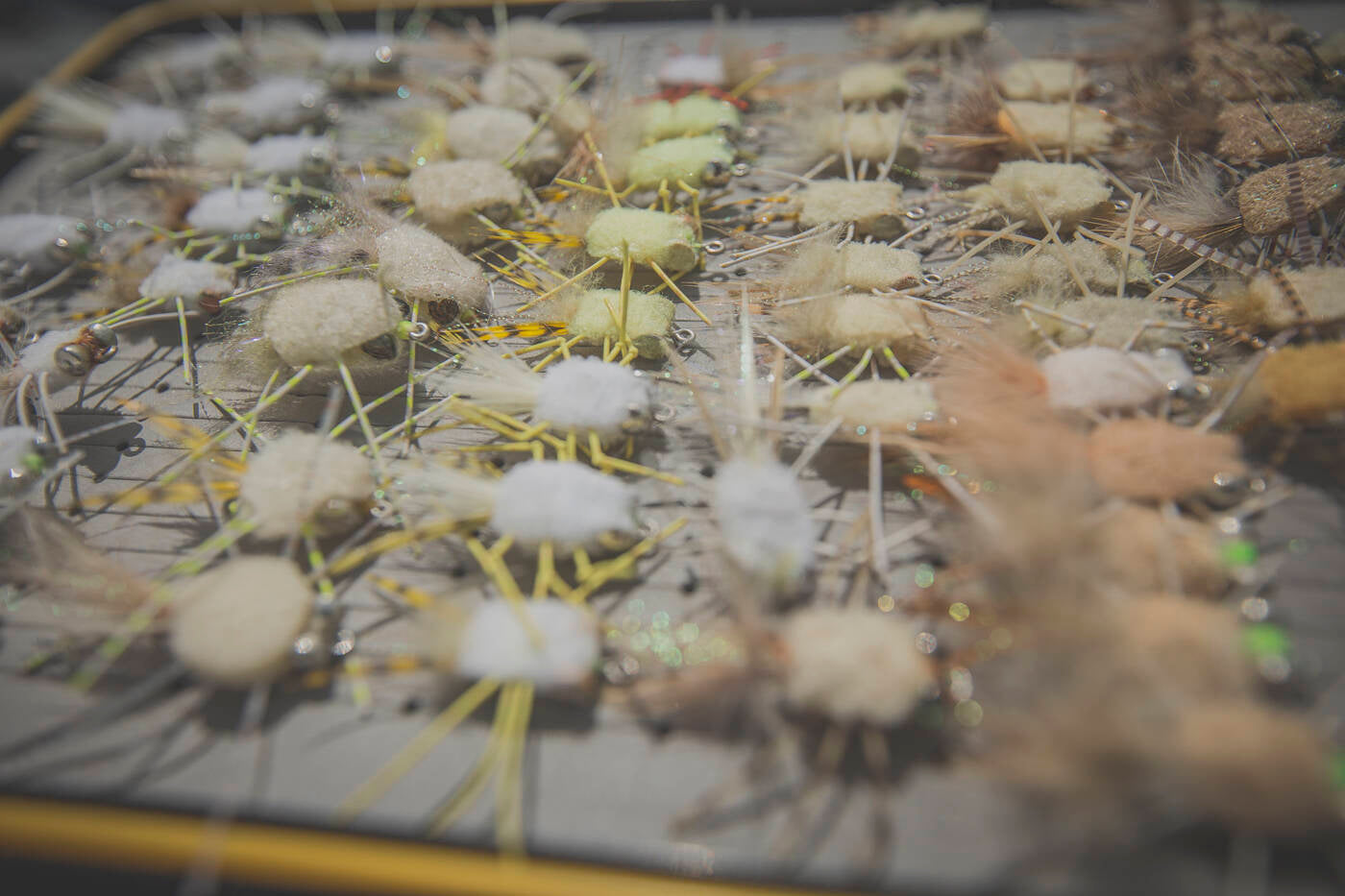
The Palometa Club Custom Raghead Crabs
Don’t leave home without it! These simple variations of the traditional Raghead Crab are what the guides want to see and are super effective. We have custom tied patterns and a handful of other secret weapons are only available at Tailwaters Fly Fishing Company and at the Palometa Club lodge.
Gear up at tailwaters
Our exclusive booking agent, Tailwaters Fly Fishing Company, in Dallas, Texas also operates an industry leading fly shop with all the latest and greatest equipment, gear, and fly selections we recommend for a visit to Ascension Bay. If you don’t have a local fly shop, please support Tailwaters gearing up for the trip!
Tarpon
The year round majority of the tarpon fishing on Ascension Bay is in the backcountry lagoons and lakes for juvenile “baby” tarpon in the 5-25 pound size range. During the late spring and summer months you may also encounter large adult, migratory tarpon on the flats or near the reef on a calm day. Almost any type of baitfish pattern or standard issue tarpon pattern will work well —in accordance to the size of the fish being targeted. Baby tarpon flies should be 1/0 – 2/0 & adult tarpon flies should be as large as 3/0 – 4/0. There is no scientific method to preparing your tarpon box, so just have a nice cross section of our recommendations as well as any of standard Florida Keys style tarpon patterns you may already have. It is also a good idea to have a few seducers and deceivers in the arsenal as well. Unless you are interested in setting IGFA records, we recommend simply rigging your tarpon leaders with straight fluorocarbon. A 5-6’ section of non-tapered fluoro is super strong and easy to tie with a loop to loop connection onto your fly line.
Tarpon Leader Recommendations
Juvenile “Baby” Tarpon: 40-50lb Straight Fluorocarbon
Adults (May – September): 80lb Straight Fluorocarbon
Tarpon Class Leader Recommendations:
Juvenile “Baby” Tarpon: 16lb Class – 40-60lb Shock
Adults (May – September): 16-22lb Class – 80lb Shock
Barracuda & Sharks
Barracuda will eat long needlefish and baitfish patterns stripped very quickly. Ideally, your cuda’ fly has a tandem or trailer hook to increase the likelihood the hook will hold. Both lemon sharks and barracuda will eat poppers as well. A 4-5 foot piece of straight monofilament with a 10” wire “bite” tippet is required. We recommend a minimum of 35-40lb wire and our favorite brands are Tyger-Wire and Rio. Both are very easily knotable and super strong.
Snook
Snook will eat most all standard baitfish and baby tarpon flies, however as a rule of thumb snook tend to key in on red and white colored flies in particular. Make sure to have a handful of red/white clousers, deceivers, and even a few poppers in the box for snook. Snook are generally not very leader shy and you should be able to present your typical baby-tarpon fly and 40 or 50lb rigging successfully without having to change flies.
Jack Crevalle
Jacks are very aggressive and will eat nearly all baitfish patterns. Jack Crevalle are group feeders and will swarm around bait balls of sardines or small mullet when feeding. Jacks are also not leader shy and they have rough teeth that can cut through light tackle easily. We recommend approximately 40lb straight fluorocarbon or monofilament when fishing for jacks.
